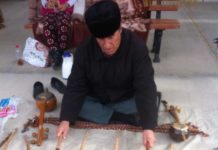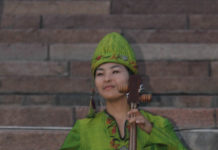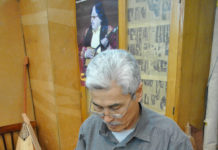Tajik folk music is rich and diverse, and like a mirror, reflects the life of the nation, its emotions and character, everyday life and work practices, traditions and customs. Musical instruments of the Tajik people are diverse in their purpose and form. The most interesting are string instruments (dutor, rubab and tanbur, konun), bow instruments (gidjak and violin); wind instruments (nai, karnay, surnay), cymbal instruments (chang), percussion instruments (tablak, clay kettledrum), doira (tambourine) and kayrok (stone castanets).
The musical chronicles of Tajiks are transmitted via numerous historical monuments that have survived till today. Such examples as colorful murals in Penjikent, terracotta statuettes of musicians found in Samarkand, images on silver dishes for feasts, the earliest of which date back to the third to second centuries. BC. There are also numerous remarkable miniatures from ancient manuscripts of fourteenth to sixteenth centuries that give a vivid idea about the place of music and musical instruments in medieval society. Extensive information about the musical art of the Tajiks can be found in numerous works of famous scholars of the time, such as Farabi, Ibn Sino and Jami.
Making musical instruments is a very complex and time-consuming process. To produce single high-quality string or percussion instrument it takes approximately six months.
For instance production of rubab, a string instrument, requires use of several types of wood. The process of cutting a pitcher-shaped shell is very painstaking and requires not only great diligence, but also special skills. Secrets of soaking logs, stretching the skin of an animal on the main part of a musical instrument, adjusting strings and pins are transmitted only from father to son and from master to apprentice.
A plucked multi-stringed instrument konun, which is a flat wooden box of rectangular trapezoidal shape, is made of apricot, walnut and other hardwood. The upper part of konun consists of a wooden cover, of about 4 mm thickness, the rest is covered with fish skin.
Musical instruments made by famous craftsmen can be recognized not only by the exceptional timbre of sound, but also by the exquisite form of the body, the decoration with fine ornamental carving with inlay from bone and mother-of-pearl.
In Tajikistan, there is a private museum of Tajik national musical instruments of the famous musician and composer Gurminja Zavkibekov, which displays more than 200 types of old and modern musical instruments.
Masters who make traditional musical instruments and play them include third generation craftsmen are Dona Zieev and Shavkmamad Pulodov.





